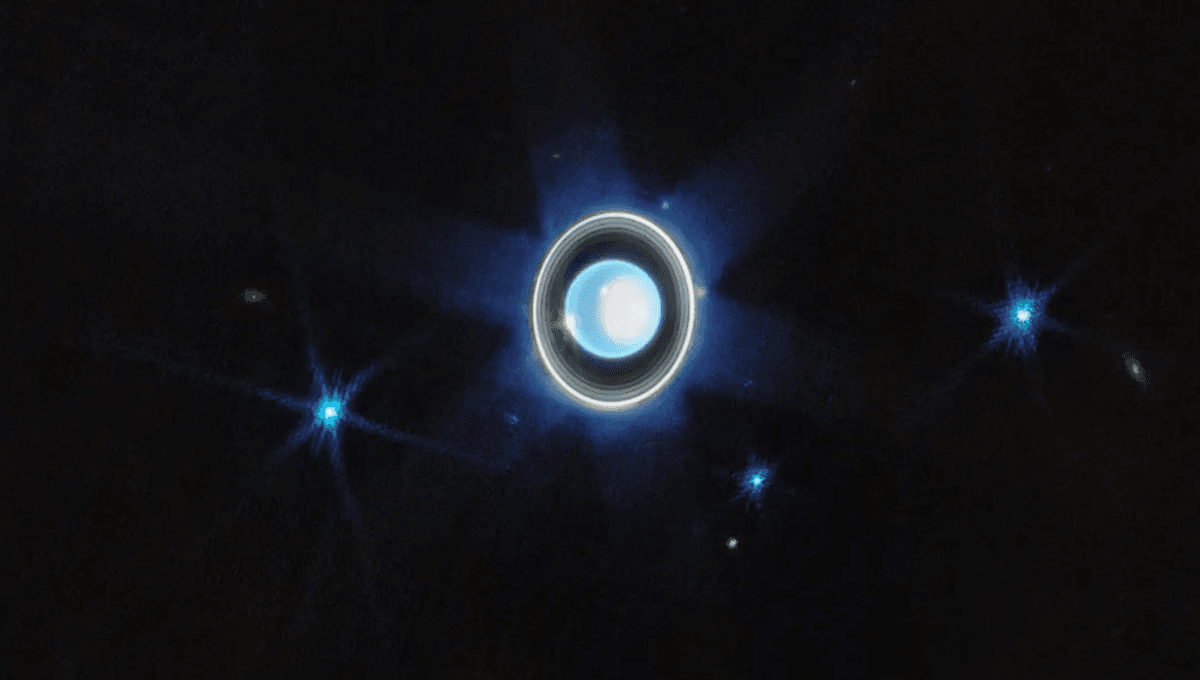
On April 7, 2025, star HIP 16271 was occulted by Uranus. As a star, it is by no means famous. A yellow-white star in the constellation of Taurus, not bright enough to be visible to the naked eye given its distance – about 400 light-years away – but bright enough to allow astronomers to look into the atmosphere of Uranus in great detail for the first time in 30 years.
Uranus is an ice giant planet with a thick atmosphere over a hot mantle of water, ammonia, and methane ices. Humanity has only sent one spacecraft to the planet, Voyager 2 in 1986, which had a chance to look at the planet up close. Occultations of bright stars are an excellent probe for the atmosphere. As the star begins to disappear, hidden behind the planet, some of the light filters to the upper layers of the Uranian atmosphere, providing novel insights.
“As Uranus began to occult the star, the planet’s atmosphere refracted the starlight, causing the star to appear to gradually dim before being blocked completely. The reverse happened at the end of the occultation, making what we call a light curve. By observing the occultation from many large telescopes, we are able to measure the light curve and determine Uranus’ atmospheric properties at many altitude layers,” William Saunders, science principal investigator and analysis lead of the Uranus Stellar Occultation Campaign 2025, said in a statement.
And it was a big campaign. It involved 30 astronomers and 15 different observatories from Colorado to Hawai’i, and even two in Mexico. The data will provide new information about the temperature and density of the atmosphere, which will also be useful in the preparation of a future mission. It will also help refine properties of the planet, such as its motion and rings.
“This was the first time we have collaborated on this scale for an occultation,” said Saunders. “I am extremely grateful to each member of the team and each observatory for taking part in this extraordinary event. NASA will use the observations of Uranus to determine how energy moves around the atmosphere and what causes the upper layers to be inexplicably hot. Others will use the data to measure Uranus’ rings, its atmospheric turbulence, and its precise orbit around the Sun.”
It might be surprising to know that there is a large uncertainty in the position and orbit of Uranus, of over 160 kilometers (100 miles). Sure, the planet is almost 3 billion kilometers from us (1.8 billion miles), so that might seem to be peanuts over such a vast distance – but it matters for detailed astronomical observations or when we send back another probe. You do not want to miss the planet.
To prepare for this occultation and to help refine the position of Uranus, the team collaborated with international partners on an occultation with a much dimmer star that happened on November 12, 2024 and was visible in Asia. That set the basis for this recent work.
“As scientists, we do our best work when we collaborate. This was a team effort between NASA scientists, academic researchers, and amateur astronomers,” explained Emma Dahl, from Caltech. “The atmospheres of the gas and ice giant planets [Jupiter, Saturn, Uranus, and Neptune] are exceptional atmospheric laboratories because they don’t have solid surfaces. This allows us to study cloud formation, storms, and wind patterns without the extra variables and effects a surface produces, which can complicate simulations very quickly.”
There are several dim occultations happening in the coming years that NASA hopes to observe, hopefully from space as well, but the exciting one will be in 2031 with a star that is even brighter than HIP 16271.
Source Link: Rare Alignment Gives NASA A Chance To Peer Into Uranus